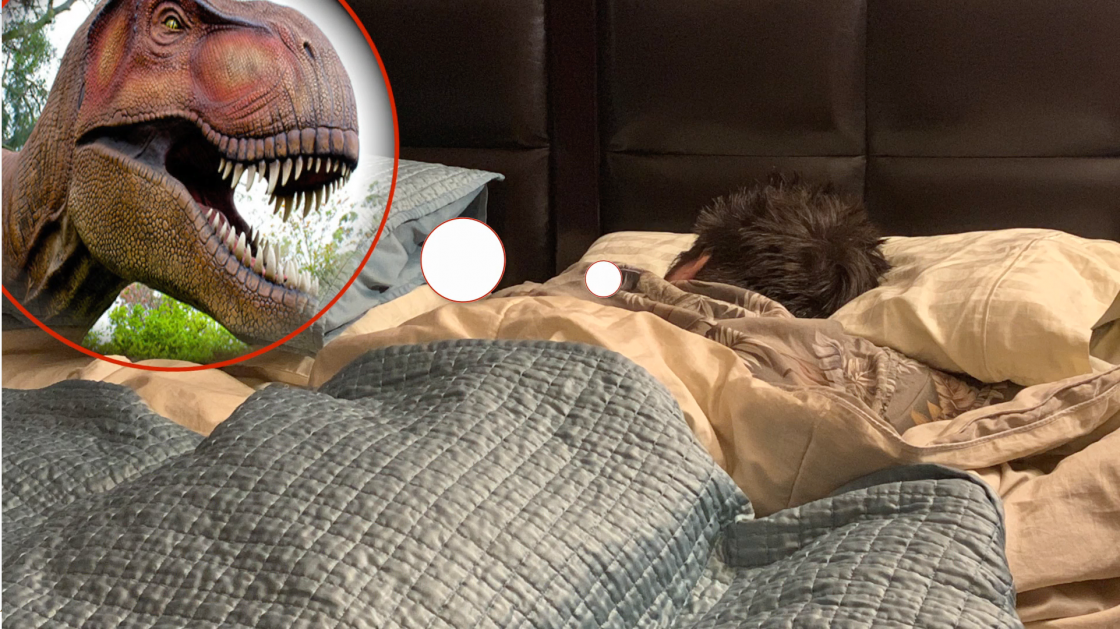Click the following link to hear and see the story!
Check this link out to see my reflection.
Side bar reflection:
If you were wondering what I used to complete my work here it is:
1. I used photoshop to customize the still images.
2. Apple motion was used to create the cgi effect in the “thyme” piece.
3. Final cut pro was used to edit the film and animate the photos and icons.
4. Handbrake was used to re-compress the files for better stream- ing performance and bath-width use.

Wow! Your story and reflection clearly show that you have a good handle on digital storytelling. I liked that you listed the resources you used in creating your story.
On side note, are those Dominion games I see in the background? I can’t post a photo of our game room in this comment, but I’ll put it on Slack. Last count was over 500 games.
Where did the featured image at the top of this page come from? Is that dinosaur your assignment sneaking up on you while you sleep? Your use of metaphorical imagery throughout your story is really nice — it gives me as the viewer another layer to engage with as I follow your meaning-making.
There’s something very playful in making a story about NOT making a story — this is the tone I’ve come to expect of you as a storyteller. Nice work there. You open with mention of the “Pareto Principle” but don’t come back around to it — I like this as a frame that broadens your purpose in telling the story that you do. I’d love to see you use elements like that in future story narratives to extend your meaning, the way you do with metaphorical images.
Can you talk more about your choice to use two cameras in the shoot of your reflection? The changing back and forth creates a dynamism that helps hold my attention with little other movement in the scene.
Since your background is in video and media production, I’m curious whether you see meaningful differences between that and “digital storytelling”. Are they one-in-the-same? Is one an umbrella term that captures the other and then some? In what ways are they different, if any?
The image at the top of the screen is a thumbnail that I captured from the middle of the video to entice viewers to watch it. I thought it was interesting. I created it by mounting my phone on a tripod and engaging its timer function. Then I found a t-rex photo, cropped it, applied a vignette mask to fade the edges up against the red circle. Then I made two smaller ones outlined in red to make the appearance of me dreaming about my scary assignment sneaking up on me. I used two cameras for a few reasons. First off, it does help make a static low action shot more interesting. Two, if I end up having “umsâ€, I can edit them out with out having to make it appear choppy. I just cut to the second camera and then it looks like I did it on purpose versus covering up a mistake. Lastly, it allows me to change my mind if I want to change the content I am delivering as well. I simply record new material and make sure its angle is different enough from the previous angle right before it in the timeline. In my experience taking the class so far, digital story telling is more of an umbrella term and includes several types of mediums. One might tell a story in a pod cast form, they might string together photos with narration, they may write a traditional story on a website, but then supplement with multi-media. Where as, video production is a type of digital story telling, but consists of capturing actors’ and actresses’ interpretations of scripts using a camera. That media is then edited into a cohesive story. The editing stage can add to the mood of the story. An example of what I mean, is the length of scenes can be edited to be sharper and faster for an action scene, but slower and wider pans for a dramatic scene.